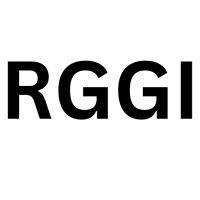Summary
Cut through the green tape
We don't push agendas. At Net Zero Compare, we cut through the hype and fear to deliver the straightforward facts you need for making informed decisions on green products and services. Whether motivated by compliance, customer demands, or a real passion for the environment, you’re welcome here. We provide reliable information—why you seek it is not our concern.
Details
- Regional Greenhouse Gas Initiative
Deep dive
Background
The Regional Greenhouse Gas Initiative (RGGI) is the first mandatory cap-and-trade program in the U.S. designed to reduce carbon dioxide (CO₂) emissions from the power sector. Established in 2005 through a Memorandum of Understanding (MOU) signed by seven Northeastern and Mid-Atlantic states, RGGI now includes 10 participating states: Connecticut, Delaware, Maine, Maryland, Massachusetts, New Hampshire, New Jersey, New York, Rhode Island, and Vermont. The program is administered collectively by state environmental agencies and RGGI, Inc., a non-profit organization coordinating auctions and compliance tracking. RGGI builds on earlier regional climate efforts, such as the Northeast States for Coordinated Air Use Management (NESCAUM) and operates alongside federal policies like the Clean Air Act, though it predates and exceeds federal power-sector emissions regulations in ambition. By setting a declining cap on CO₂ allowances and auctioning them quarterly, RGGI aligns with broader U.S. climate goals while allowing states flexibility in reinvesting proceeds into clean energy and efficiency programs.
Emissions Reporting Requirements
RGGI imposes strict monitoring and reporting requirements on covered entities to ensure transparency and compliance. Affected power plants must install certified continuous emissions monitoring systems (CEMS) to collect, record, and report CO₂ mass emissions data in accordance with U.S. EPA regulations (40 CFR Part 75). This data must be submitted to the EPA's Clean Air Markets Program Data (CAMPD) database and is automatically transferred to RGGI’s CO₂ Allowance Tracking System (COATS) for regional oversight. Reports are filed quarterly, with a 30-day deadline after the end of each quarter, and include detailed metrics such as facility ID, operating hours, heat input, and CO₂ emissions—including adjustments for eligible biomass fuels. Preliminary data is subject to revision after quality assurance reviews, and annual/compliance-period reports are publicly accessible via RGGI’s interactive dashboard and COATS platform.
Covered Entities
RGGI’s reporting obligations apply to fossil fuel-fired power plants with a capacity of 25 megawatts (MW) or larger within participating states, covering facilities region-wide. As of 2024, 222 sources were subject to compliance, with 99.5% meeting their obligations in the 2021–2023 control period. Notably, New York has additional applicability criteria, while industrial generators and biomass-fueled units may have modified reporting requirements or exemption adjustments. The program also requires interim compliance checks, where sources must hold allowances equal to 50% of their emissions during the first two years of each three-year control period (e.g., 2024–2026). This structure ensures continuous accountability while accommodating sector-specific nuances.
Penalties for Noncompliance
Failure to meet RGGI’s reporting or compliance requirements triggers significant penalties. Covered entities that do not surrender sufficient allowances to match their emissions by the end of a control period face a three-to-one allowance penalty (i.e., forfeiting three allowances for every ton of excess emissions). States may also impose additional fines or enforcement actions under their individual CO₂ Budget Trading Program regulations. For example, Connecticut’s rules mandate strict adherence to adjusted base budgets, and noncompliant facilities risk losing auction participation rights or facing state-level legal action. The program’s robust auditing and public reporting mechanisms further deter violations, ensuring that RGGI’s market-based approach remains both environmentally effective and legally enforceable.


